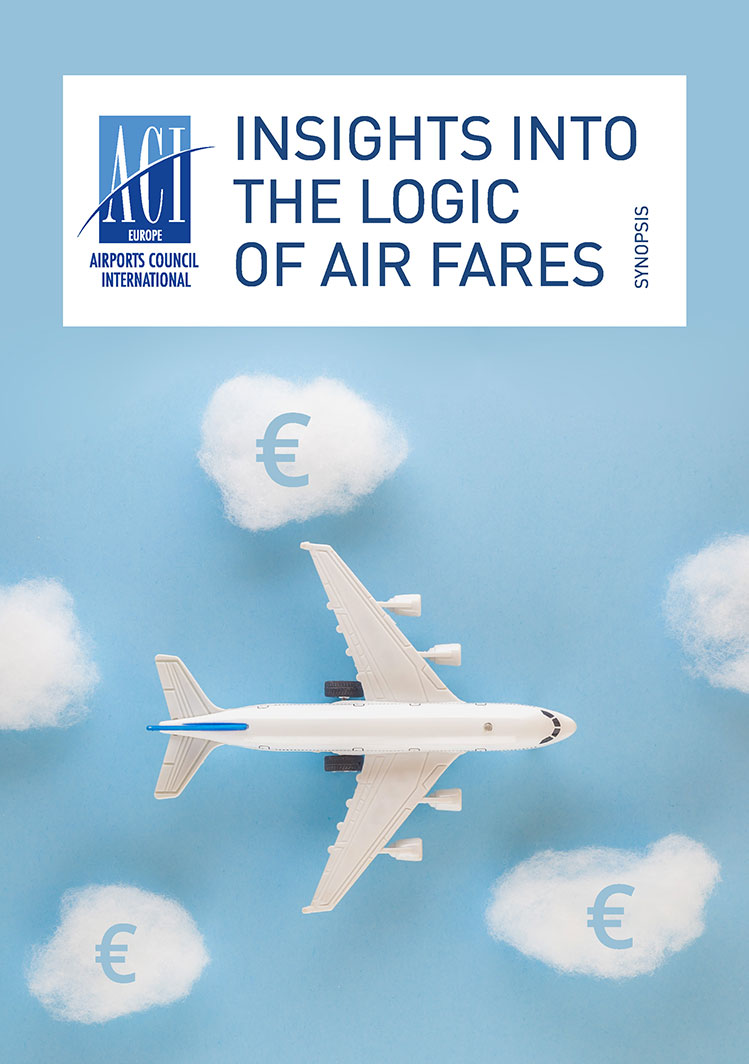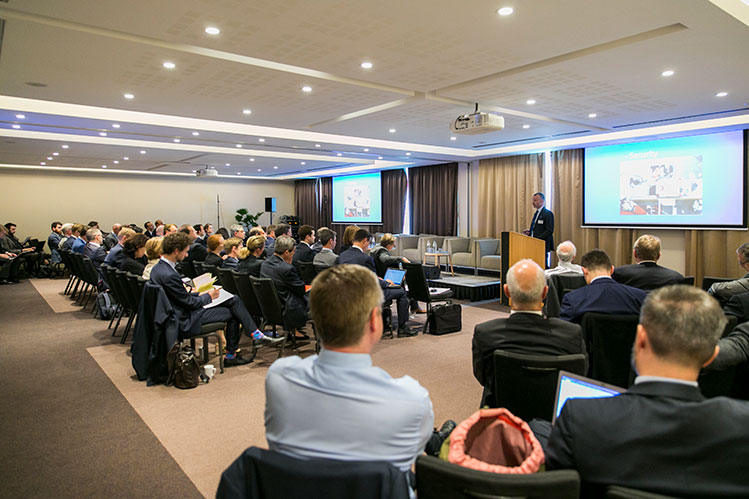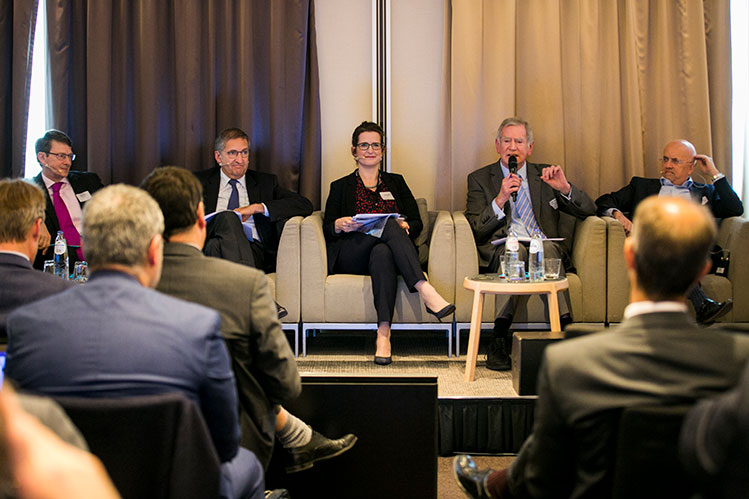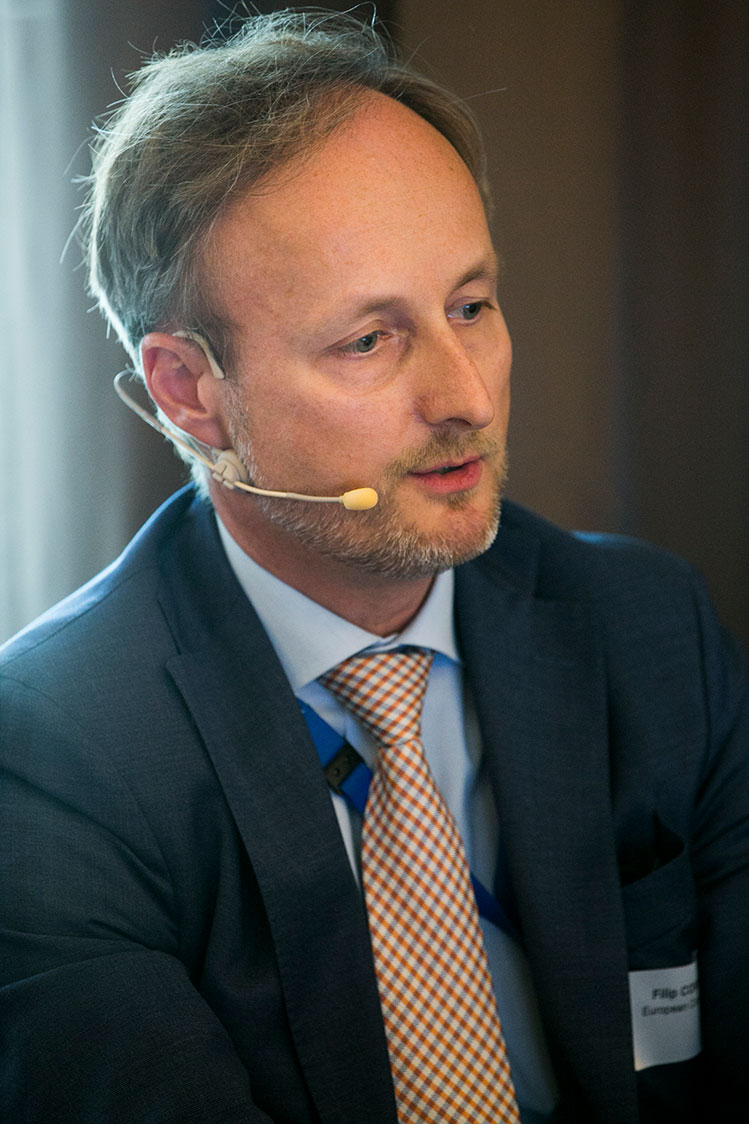
The 2nd Airport Investment Symposium was the occasion to launch a new study by global consultancy ICF, commissioned by ACI EUROPE. The Study entitled Identifying the Drivers of Air Fares has also been synopsised by ACI EUROPE, available under the title: Insights into the Logic of Air Fares.
Against the backdrop of the past two years of airline campaigning on airport charges, traffic growth has been up, airline consolidation accelerated, and the low cost airline model continued to be the main growth driver in Europe. And yet, reading the soundbytes of airline CEOs, one thing is conspicuous by its absence: airport investment. ACI EUROPE decided a timely reminder was needed and organised its 2nd Airport Investment Symposium last month, convening airlines, airports, regulators and analysts to discuss the value of airport investment. Michael Stanton-Geddes reports.
A false accusation has hung in the air since last year, when Airlines for Europe (A4E) redoubled their campaign for more airport charges regulation, by calling airports ‘connectivity disrupters’ and claiming reductions in airport charges ultimately get passed through to passengers, in the form of lower air fares. The accusation ignores the dynamic nature of airline ticket pricing, but that didn’t stop IAG CEO Willie Walsh and others from feeding it to the media.
We did not want to leave it unaddressed. With the participation of key EU policymakers, airports and other aviation representatives, the 2nd Airport Investment Symposium was the occasion to launch a new study by global consultancy ICF, commissioned by ACI EUROPE. The Study entitled Identifying the Drivers of Air Fares has also been synopsised by ACI EUROPE, available under the title: Insights into the Logic of Air Fares. The study provides clear evidence that there is actually no one-for-one correspondence between airport charges – and any change in their level – and air fares. In other words, lower airport charges are generally not passed through to passengers in lower air fares. Rather, any investment that increases the capacity for competition is likely to reduce air fares, as there is clear evidence that airlines use their ability to charge higher air fares for routes where there is limited competition.

ACI EUROPE organised its 2nd Airport Investment Symposium last month, convening airlines, airports regulators and analysts to discuss the value of airport investment.
ACI EUROPE’s Director-General Olivier Jankovec opened the event before an audience of 80 with the reminder that infrastructure spending in Europe is still 20% below the levels of 2009. Deferred and delayed investment today undermines long-term growth potential of air transport. More than that, it threatens economic convergence and means that the full benefits of the European Union’s Single Market aren’t quite as mature as they should be. But the most telling sign is the one you may have seen with your own eyes, on your own travels. Demand for air travel growing at such a steady clip, the pressure on the current level of infrastructure is building.
Over the course of the afternoon, including 2 panel sessions and a closing speech by Henrik Hololei, Director General, DG MOVE at the European Commission, 5 key points emerged out of the discussion.
POINT 1: Whilst airports are an essential part of the air transport ecosystem, they account for a relatively modest share of the financial structure. According to the analysis by ICF, amongst European airlines, 80% of passengers travel with carriers that have total airport costs of less than 6% of their total costs. It’s no surprise! We all know the costs that drive an airlines pricing are fuel, staff and equipment. Changes in airport charges are so small, counted in cents, that they have little impact if any on the final airfare. But those changes in charges can have a pronounced impact when it allows for new competition at an airport. The European Commission’s Director for Competition Henrik Morch reported that the European Commission has seen that the move from 1 to 2 competitors on any given route decreases prices 4-5%, and by up to 10% if a low-cost carrier enters as a competitor.
POINT 2: Connectivity is the primary demand of consumers. Travellers want to take the airplane to a variety of destinations, on a variety of services, at a price that they can afford. MEP Deirde Clune spoke about the importance of connectivity provided by regional airports, such as her home airport Cork, Ireland, while John Hanlon of Norwegian Airlines reaffirmed the message that passengers increasingly want point-to-point connectivity, for example from the regions of Europe to the regions of the US. An implication is that airline interest should not be considered as a proxy for passenger interest.

Jonathan Sandbach, Senior Adviser Alix Partners and former Chief Economist Heathrow Airport; Michael Eggenschwiler, CEO Hamburg Airport; Kata Cserep, Vice President ICF; John Hanlon, Head of International Government & Industry Relations Norwegian; and Henrik Morch, Director, DG Competition, European Commission.
POINT 3: Airports’ users do not make long-term commitments, which increases risk to investors. Sandbach noted that Birmingham Airport invested heavily to become BA’s Euro-hub, but then BA changed its business plan and left Birmingham with hub infrastructure that its airlines did not need. And Hanlon of Norwegian said that in his personal view we are in danger of focusing on the airline business model of yesteryear; the shifting air transport market increases uncertainty. A concern raised by Dr. Harry Bush is a regulatory regime that puts too much control of an airport’s business plan into the hands of the one dominant airline. This in turn impedes competing airlines from entering and offering connectivity for their market segment, which may have different demand as passengers. Ultimately, regulation should aim to ensure optimal outcomes for all passengers.
POINT 4: Consumers don’t benefit if regulatory uncertainty is increased. If on top of traffic risk, we add regulatory uncertainty, then the business case is less certain for investors, stated Pierre-Hugues Schmit of VINCI Airports. Deepu Chintamaneni of IFM investors was clear that to attract private financing for infrastructure projects, governments should not interfere with a regulatory regime that is working. Nearly all the speakers repeated the phrase “competition is the best regulator”. The risks today of airports abusing market power is minute; the bigger risk is that rigid regulation stifles the efficiency of market allocation and delays investment. The nature and intensity of airport competition is changing. Groupe ADP’s Edward Arkwright noted that the market for connecting passengers is around 450 million passengers, and that ADP’s market share of that is around 5%. Other European major hubs, along with Istanbul and the Gulf hub airports, are trying to capture the transfer passengers with their hub carrier partners. The European Commission’s Henrik Morch asserted the regulators view that if you see the discussions between airports and airlines about a common future and if you see how planes are moved between airport bases, then it is clear that competition exists. Competition increases the risk to airports but also ensures better outcomes for consumers who benefit from the dynamic rivalry of airports competing for airlines and passengers.
POINT 5: Increasing airline consolidation in Europe is going to intensify the dominance of some airlines – with implications for consumers and airports. ICF vice president Kata Cserep reminded the audience that it is highly likely that there will be further concentration of airlines, through bankruptcy or mergers, in Europe. In Europe, the top 6 airlines currently account for only 50% of the market, while across the atlantic, the top 6 airlines in the United States have a 91% share of their market. Hanlon of Norwegian said that consolidation should be welcomed as long as it is predicated on liberalisation and market access, which have enabled the tremendous growth of aviation. The trend of airline consolidation impacts the relative relation between an airport and its biggest airline customer, according to Jonathan Sandbach, former chief economist of Heathrow Airport and advisor to AlixPartners. When one airline is the primary customer for an airport, the threat of that airline reducing its traffic is credible. More and more airports have one airline that provides 2/3 of the departing seat capacity, according to data in the ICF report.

Filip Cornelis, Director of Air Transport, DG MOVE, European Commission.
The final message from the investment symposium was that the air transport market is shifting. Investment into airports fosters competition (not just among airports, but also among airlines) and that can be best supported with a regulatory system which doesn’t fix what isn’t broken.
Michael Stanton-Geddes is the Head of Economics at ACI EUROPE.







